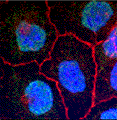Biochemistry, Department of
Document Type
Article
Date of this Version
2014
Citation
Kaloriti D, Jacobsen M, Yin Z, Patterson M, Tillmann A, Smith DA, Cook E, You T, Grimm MJ, Bohovych I, Grebogi C, Segal BH, Gow NAR, Haynes K, Quinn J, Brown AJP. 2014. Mechanisms underlying the exquisite sensitivity of Candida albicans to combinatorial cationic and oxidative stress that enhances the potent fungicidal activity of phagocytes. mBio 5(4):e01334-14.
Abstract
Immune cells exploit reactive oxygen species (ROS) and cationic fluxes to kill microbial pathogens, such as the fungus
Candida albicans. Yet, C. albicans is resistant to these stresses in vitro. Therefore, what accounts for the potent antifungal activity
of neutrophils? We show that simultaneous exposure to oxidative and cationic stresses is much more potent than the individual
stresses themselves and that this combinatorial stress kills C. albicans synergistically in vitro.We also show that the high
fungicidal activity of human neutrophils is dependent on the combinatorial effects of the oxidative burst and cationic fluxes, as
their pharmacological attenuation with apocynin or glibenclamide reduced phagocytic potency to a similar extent. The mechanistic
basis for the extreme potency of combinatorial cationic plus oxidative stress—a phenomenon we term stress pathway interference—
lies with the inhibition of hydrogen peroxide detoxification by the cations. In C. albicans this causes the intracellular
accumulation of ROS, the inhibition of Cap1 (a transcriptional activator that normally drives the transcriptional response to
oxidative stress), and altered readouts of the stress-activated protein kinase Hog1. This leads to a loss of oxidative and cationic
stress transcriptional outputs, a precipitous collapse in stress adaptation, and cell death. This stress pathway interference can be
suppressed by ectopic catalase (Cat1) expression, which inhibits the intracellular accumulation of ROS and the synergistic killing
of C. albicans cells by combinatorial cationic plus oxidative stress. Stress pathway interference represents a powerful fungicidal
mechanism employed by the host that suggests novel approaches to potentiate antifungal therapy.
Included in
Biochemistry Commons, Biotechnology Commons, Other Biochemistry, Biophysics, and Structural Biology Commons



Comments
© 2014 Kaloriti et al. This is an open-access article distributed under the terms of the Creative Commons Attribution 3.0 Unported license.